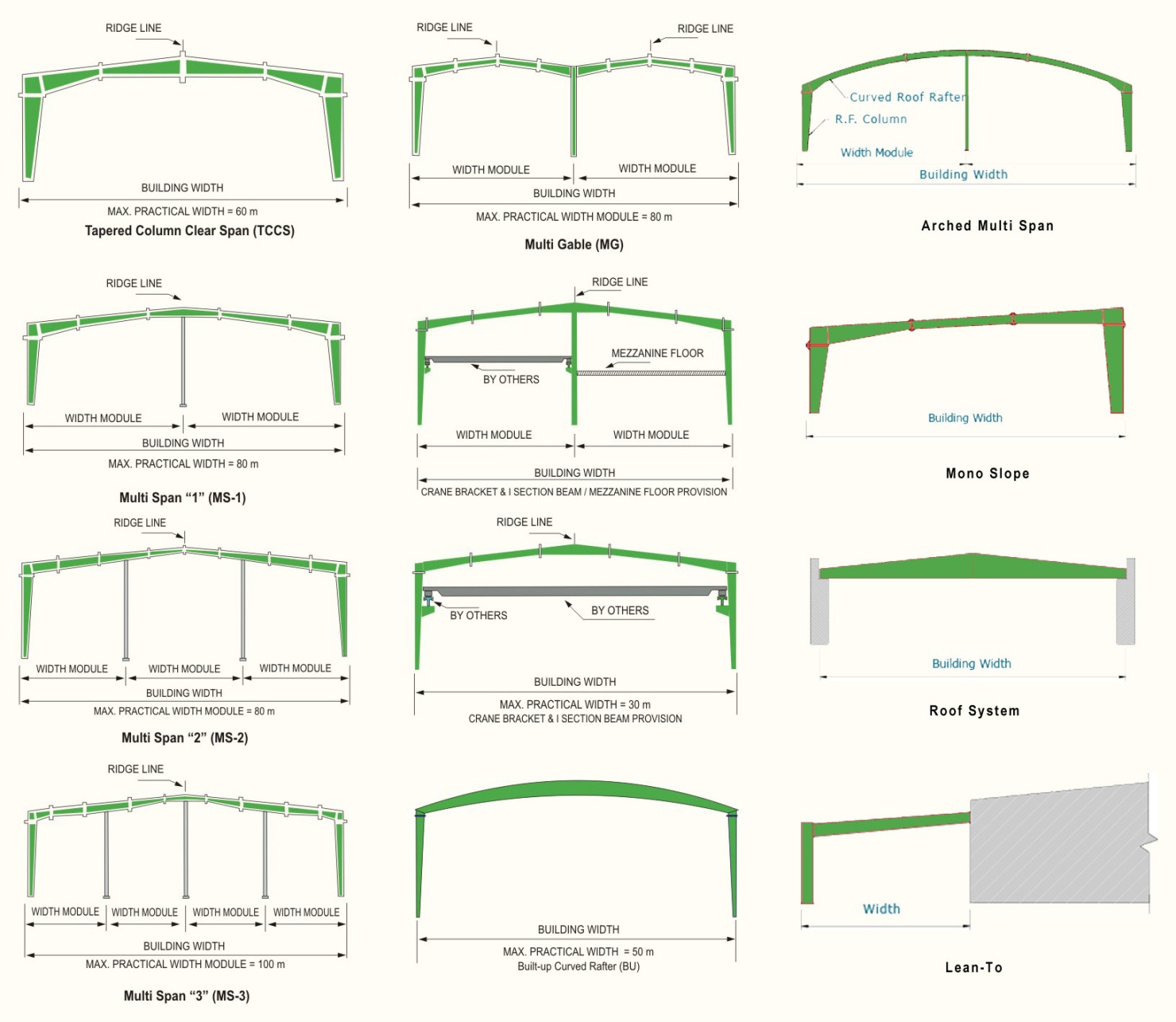Excavation is the initial and foundational step in the construction of Pre-Engineered Buildings (PEB). This crucial process involves removing soil, rock, and other materials to prepare the site for laying the foundation. Proper excavation ensures the stability and longevity of the PEB, making it an indispensable part of the construction process. At Kishore Industries, a leading manufacturer of PEB in India, we emphasize meticulous excavation techniques to ensure our buildings stand the test of time. We will delve into the importance of excavation, the detailed steps involved, and best practices to follow.
Importance of Excavation in PEB Construction
- Stable Foundation: Ensures the foundation is laid on stable and undisturbed soil, minimizing the risk of settlement and structural damage.
- Load Distribution: Allows for even load distribution across the foundation, which is vital for the structural integrity of the PEB.
- Drainage: Helps in creating an effective drainage system around the foundation, preventing water accumulation and potential damage.
- Site Preparation: Prepares the site for the next stages of construction by removing unsuitable soil and creating a level base.
Detailed Steps in the Excavation Process
- Site Survey:
- Conduct a thorough survey to understand soil conditions, groundwater levels, and any underground utilities.
- Use geotechnical reports to determine the depth and extent of excavation required.
- Clearing:
- Remove any vegetation, debris, and topsoil from the site.
- This step ensures that the excavation area is free of obstructions and ready for digging.
- Marking:
- Define the boundaries of the excavation area using stakes, strings, and spray paint.
- Ensure accurate marking according to the architectural and engineering plans.
- Excavation:
- Use appropriate machinery such as excavators, backhoes, and bulldozers to remove soil and rock.
- Begin digging from the highest point and progress towards the lowest point to ensure even excavation.
- Maintain proper slopes and angles to prevent soil collapse and ensure worker safety.
- Inspection:
- Regularly inspect the excavation site to ensure compliance with design specifications and safety standards.
- Address any issues such as water seepage, soil instability, or unexpected underground obstacles promptly.
- Safety Measures:
- Implement safety measures such as shoring and trench boxes to prevent soil collapse.
- Ensure proper signage, fencing, and protective gear for workers on-site.
Best Practices for Excavation in PEB Construction
- Use of Modern Equipment:
- Employ modern and well-maintained excavation equipment to ensure precision and efficiency.
- Regularly service machinery to prevent breakdowns and delays.
- Soil Testing:
- Conduct soil tests to determine its bearing capacity, moisture content, and compaction needs.
- Use the test results to plan excavation depth and support structures accordingly.
- Environmental Considerations:
- Minimize environmental impact by using eco-friendly practices such as recycling excavated materials.
- Implement erosion control measures to protect surrounding landscapes.
- Training and Supervision:
- Ensure that all workers are trained in excavation safety and best practices.
- Supervise the excavation process closely to ensure adherence to plans and safety protocols.
- Contingency Planning:
- Prepare for unexpected challenges such as adverse weather, equipment failure, or encountering hard rock.
- Have contingency plans in place to address these issues without significant delays.
Additional Information on Excavation for PEB
- Types of Excavation:
- Bulk Excavation: Involves removing large quantities of material to create the foundation pit.
- Trench Excavation: Used for laying foundations, pipelines, or other utilities.
- Basement Excavation: Involves deeper digging for basement structures or underground facilities.
- Geotechnical Considerations:
- Understanding soil stratigraphy and groundwater conditions is crucial for planning excavation.
- Soil stabilization techniques may be required in areas with loose or unstable soils.
- Foundation Preparation:
- Post-excavation, the foundation bed must be prepared by compacting the soil and ensuring it is level.
- Additional support measures such as piling or raft foundations may be required in areas with poor soil conditions.
- Regulatory Compliance:
- Adhering to local building codes and regulations is essential for excavation and foundation works.
- Obtaining necessary permits and approvals before commencing excavation is crucial.
Proper excavation is the cornerstone of a stable and durable PEB foundation. At Kishore Industries, we prioritize meticulous excavation processes to ensure the highest quality in our PEB constructions. By following detailed steps and adhering to best practices, we deliver robust and reliable structures that meet our clients’ needs.
FAQs for Excavation in Pre-Engineered Building (PEB)
Why is excavation important in PEB construction?
Excavation is crucial as it provides a stable base by removing unsuitable soil and preparing the site for foundation laying. It ensures even load distribution and helps in creating an effective drainage system.
What are the key steps involved in the excavation process?
The key steps in the excavation process include site survey, clearing, marking, excavation, inspection, and implementing safety measures.
How do you ensure safety during excavation?
Safety during excavation is ensured by implementing measures such as shoring and trench boxes, proper signage, fencing, and ensuring workers wear protective gear. Regular site inspections and adherence to safety standards are also critical.
What equipment is used for excavation?
Common equipment used for excavation includes excavators, backhoes, bulldozers, and trenchers. The choice of equipment depends on the site’s requirements and the extent of excavation needed.
How do soil conditions affect the excavation process?
Soil conditions determine the depth and extent of excavation required. Soil tests reveal its bearing capacity, moisture content, and compaction needs, which influence the excavation plan and support structures.




